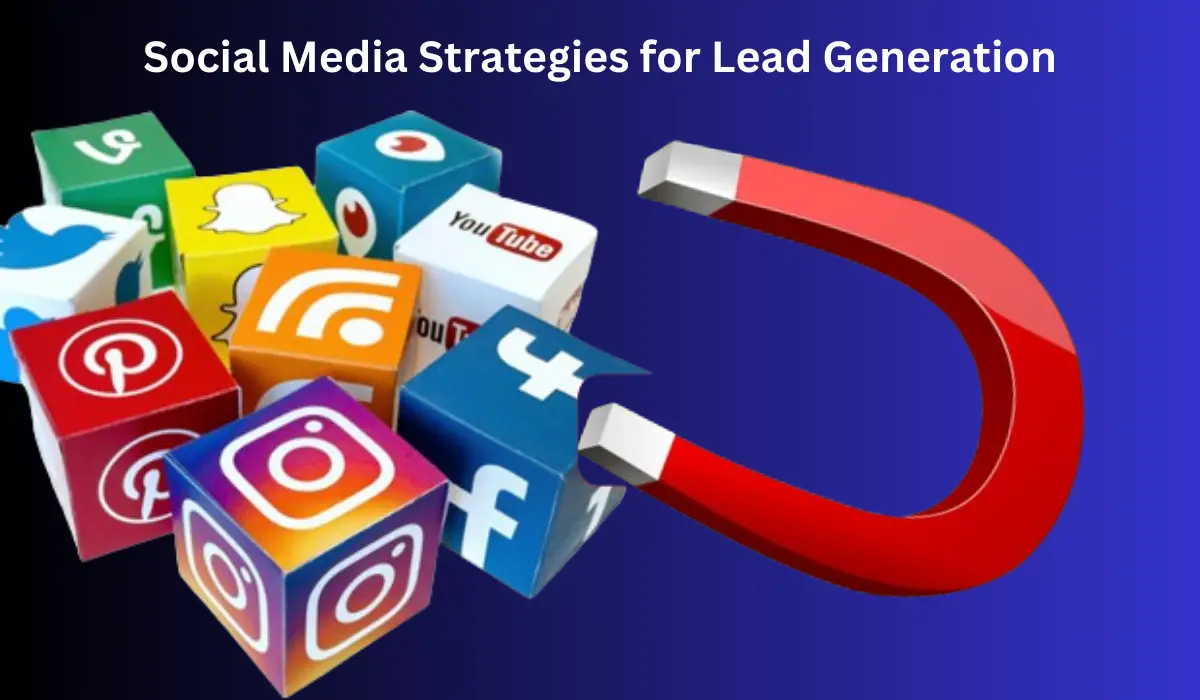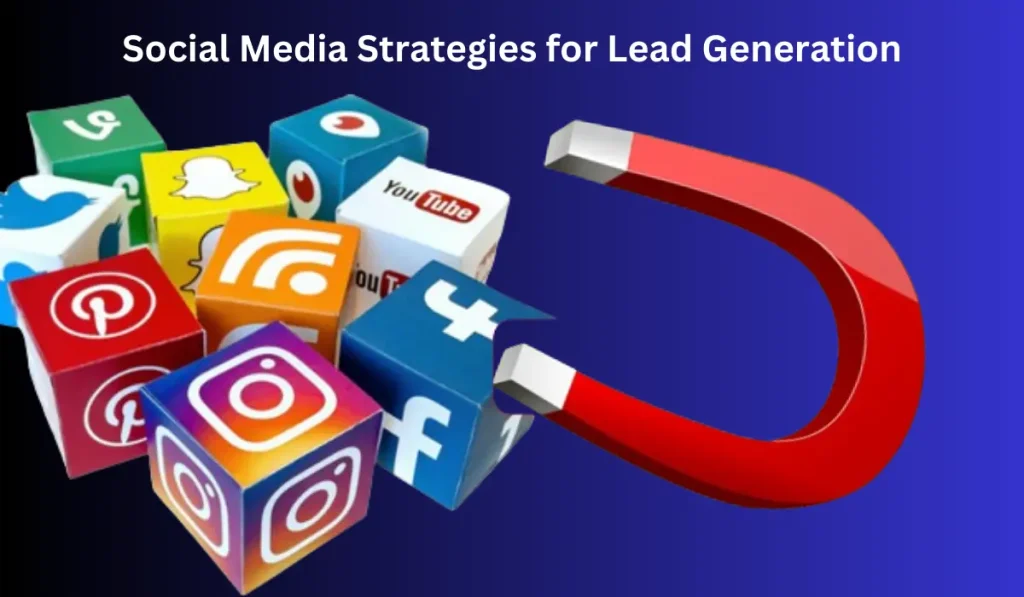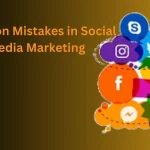Social media has transformed the way businesses connect with their audience. It’s not just a platform for sharing photos and staying in touch with friends; it’s a powerful tool for lead generation. With billions of users across platforms like Facebook, Instagram, LinkedIn, and Twitter, businesses have the opportunity to reach a vast audience and convert them into potential customers. This article explores effective social media strategies for lead generation and how businesses can leverage these platforms to grow their customer base.
Importance of Social Media Strategies for Lead Generation
Social media has transformed how businesses interact with their audience, offering unprecedented opportunities to generate leads and build relationships with potential customers. A well-thought-out social media strategy is crucial for effective lead generation. It provides a structured approach to attracting, engaging, and converting prospects into valuable leads. Here’s why having a social media strategy is so important for lead generation:
1. Targeted Audience Engagement
A social media strategy allows businesses to define and focus on their target audience. By understanding where your audience spends their time and what content resonates with them, you can create tailored campaigns that attract the right people. This targeted approach leads to higher-quality leads and more efficient use of resources.
2. Increased Brand Visibility
Social media platforms like Facebook, LinkedIn, Instagram, and Twitter have vast user bases. A strategic approach helps businesses increase brand visibility, reaching a broader audience and attracting potential leads. With consistent branding and messaging, you can build recognition and trust, which are crucial for lead generation.
3. Content Consistency and Value
A successful social media strategy ensures consistent and valuable content delivery. Regularly posting engaging, relevant, and informative content keeps your audience interested and positions your business as an industry leader. This consistent presence on social media helps maintain brand awareness and generates interest from potential leads.
4. Effective Call-to-Action (CTA) Placement
Social media strategies include clear calls-to-action (CTAs) that guide your audience towards specific actions, such as downloading a resource, signing up for a newsletter, or requesting more information. Strategically placing CTAs within your content and profiles increases the likelihood of lead conversion, as it provides a clear path for users to engage with your business.
5. Leveraging Paid Advertising
Paid advertising on social media can significantly boost lead generation efforts. A social media strategy incorporates paid campaigns to increase reach and target specific demographics. With advanced targeting options, businesses can ensure their ads are seen by the right people, improving the quality of leads generated.
6. Building Relationships and Trust
A social media strategy goes beyond just posting content—it involves engaging with your audience and building relationships. By responding to comments, answering questions, and participating in conversations, businesses create a sense of community and trust. This trust is vital for lead generation, as potential leads are more likely to engage with brands they feel connected to.
7. Monitoring and Analytics
A strategic approach to social media includes monitoring and analyzing performance. Social media platforms offer robust analytics tools that provide insights into audience behavior, engagement rates, and conversion metrics. By tracking these key performance indicators, businesses can refine their lead generation strategies, improving efficiency and effectiveness.
8. Cost-Effective Marketing
Social media strategies offer a cost-effective way to generate leads compared to traditional marketing channels. With careful planning, businesses can maximize the return on investment (ROI) of their social media efforts, reaching a large audience without significant expenditure. This cost-effectiveness makes social media an attractive option for businesses of all sizes.
9. Adaptability and Flexibility
Social media trends change rapidly, and a well-defined strategy allows businesses to adapt and stay relevant. By staying on top of trends and adjusting strategies accordingly, businesses can maintain engagement and continue generating leads. This flexibility is essential in a fast-paced digital landscape.
Also Read
Effective Social Media Strategies for Lead Generation
Social media has become an essential platform for businesses looking to generate leads. By providing unparalleled access to a wide audience, social media allows businesses to connect with potential customers in a way that traditional marketing channels cannot match. To help you maximize your lead generation efforts on social media, here are some effective strategies to consider.
1. Choose the Right Platforms
The first step in a successful social media lead generation strategy is selecting the most suitable platforms for your business. Different platforms attract different audiences, and each has its unique strengths. Here are some considerations:
- LinkedIn is best for B2B lead generation, networking, and sharing industry-specific content.
- Facebook offers robust advertising options and a diverse user base, ideal for B2C and community engagement.
- Instagram is highly visual, and perfect for lifestyle brands, e-commerce, and influencer collaborations.
- Twitter provides real-time engagement and is great for customer service and industry news.
Understand your target audience and focus your efforts on the platforms where they’re most active.
2. Create Compelling Content
Content is king when it comes to lead generation on social media. To attract and engage leads, create content that is valuable, interesting, and shareable. Consider these types of content:
- Educational Content: Share industry insights, how-to guides, and thought leadership articles to position your brand as a trusted authority.
- Interactive Content: Engage users with polls, quizzes, and questions that encourage participation and feedback.
- Visual Content: Use images, videos, and infographics to capture attention and boost engagement.
3. Use Clear Calls to Action (CTAs)
A clear call to action is crucial for converting social media engagement into leads. CTAs guide your audience towards specific actions, such as downloading a resource, signing up for a newsletter, or requesting more information. To make your CTAs effective:
- Be Direct and Concise: Use simple, action-oriented language.
- Place CTAs Strategically: Include them in posts, stories, and profiles to maximize visibility.
- Tailor CTAs to Your Goals: Adjust your CTAs based on whether you aim to increase website traffic, grow your email list, or generate sales leads.
4. Leverage Social Media Advertising
Paid advertising on social media can significantly boost lead generation by expanding your reach and allowing for precise targeting. Social media platforms offer a range of advertising options, including sponsored posts, display ads, and retargeting campaigns. When using social media advertising:
- Define Your Target Audience: Use demographic, geographic, and interest-based targeting to reach the right people.
- Test and Optimize: Experiment with different ad formats, visuals, and messaging to find what resonates best with your audience.
- Track Conversions: Use tracking pixels and analytics to monitor the effectiveness of your campaigns.
5. Build Relationships and Engage with Your Audience
Social media is not just a broadcast platform; it’s a space for conversation and relationship-building. Engaging with your audience helps build trust and keeps your brand top-of-mind. To effectively engage with your audience:
- Respond to Comments and Messages: Show that you value feedback and are attentive to your followers.
- Host Live Sessions and Q&A Events: Use live video features to interact with your audience in real-time.
- Collaborate with Influencers: Partner with influencers or brand advocates to extend your reach and credibility.
6. Implement Lead Generation Forms and Gated Content
An effective way to capture leads on social media is through lead generation forms and gated content. These tools allow you to collect contact information in exchange for valuable content or offers. Consider these approaches:
- Gated Content: Offer exclusive resources like eBooks, whitepapers, or webinars in exchange for user information.
- Lead Generation Forms: Use native forms on platforms like LinkedIn and Facebook to collect leads without directing users away from the platform.
7. Monitor and Analyze Performance
Continuous monitoring and analysis are key to refining your social media lead generation strategy. Use social media analytics tools to track key metrics like engagement, click-through, and conversion rates. This data can help you identify successful tactics and areas for improvement. Consider:
- A/B Testing: Experiment with content types, CTAs, and ad creatives to find the most effective combinations.
- Audience Insights: Analyze demographic and behavioral data to understand your audience better and tailor your strategy accordingly.
- Conversion Tracking: Set up conversion tracking to measure the impact of your social media efforts on lead generation and sales.
Conclusion
Social media is a dynamic and powerful platform for lead generation. By identifying the right platforms, creating engaging content, utilizing CTAs, leveraging social media advertising, engaging with your audience, and analyzing performance, businesses can unlock the full potential of social media to generate high-quality leads. Stay adaptable, keep up with social media trends, and continuously refine your strategy to achieve long-term success in lead generation.





